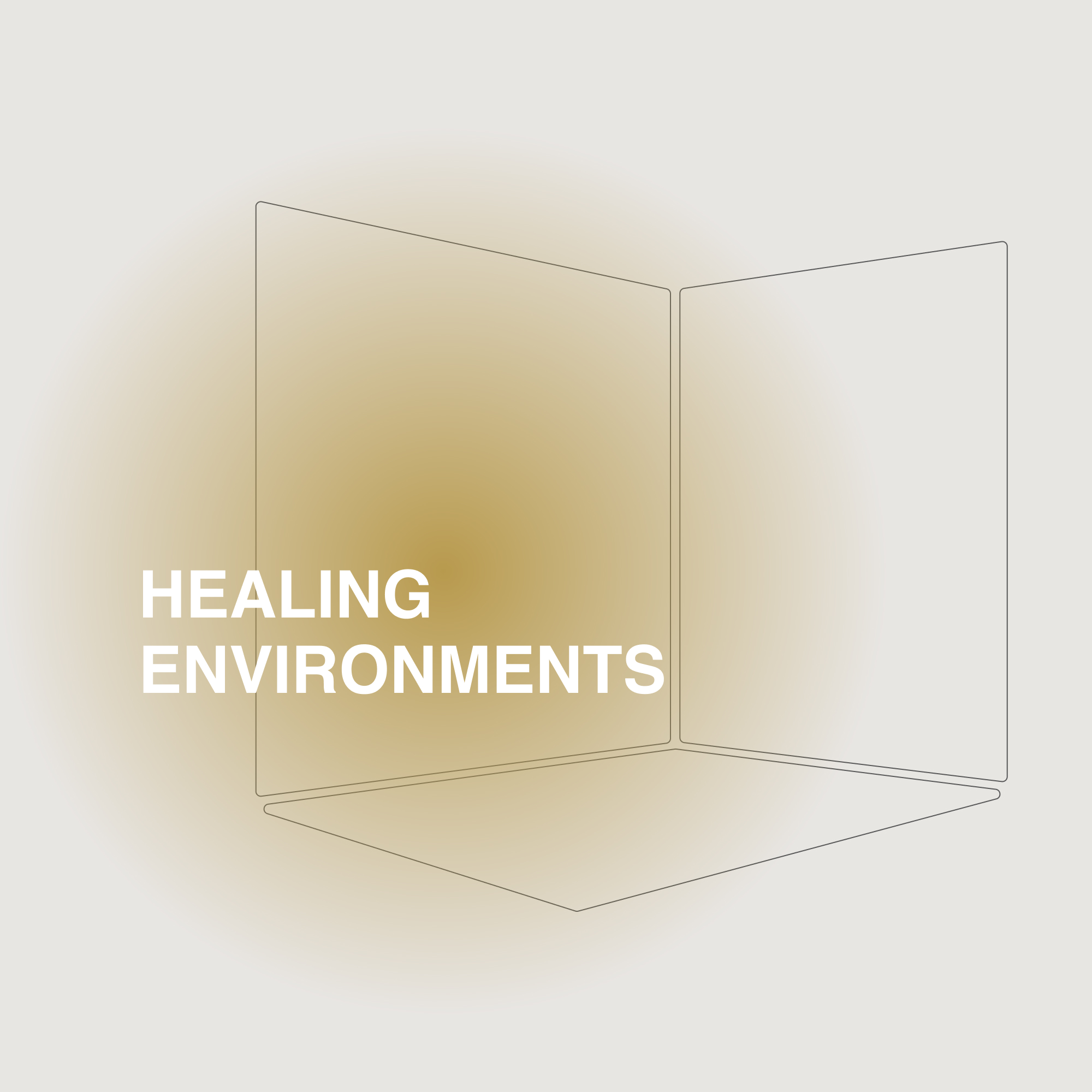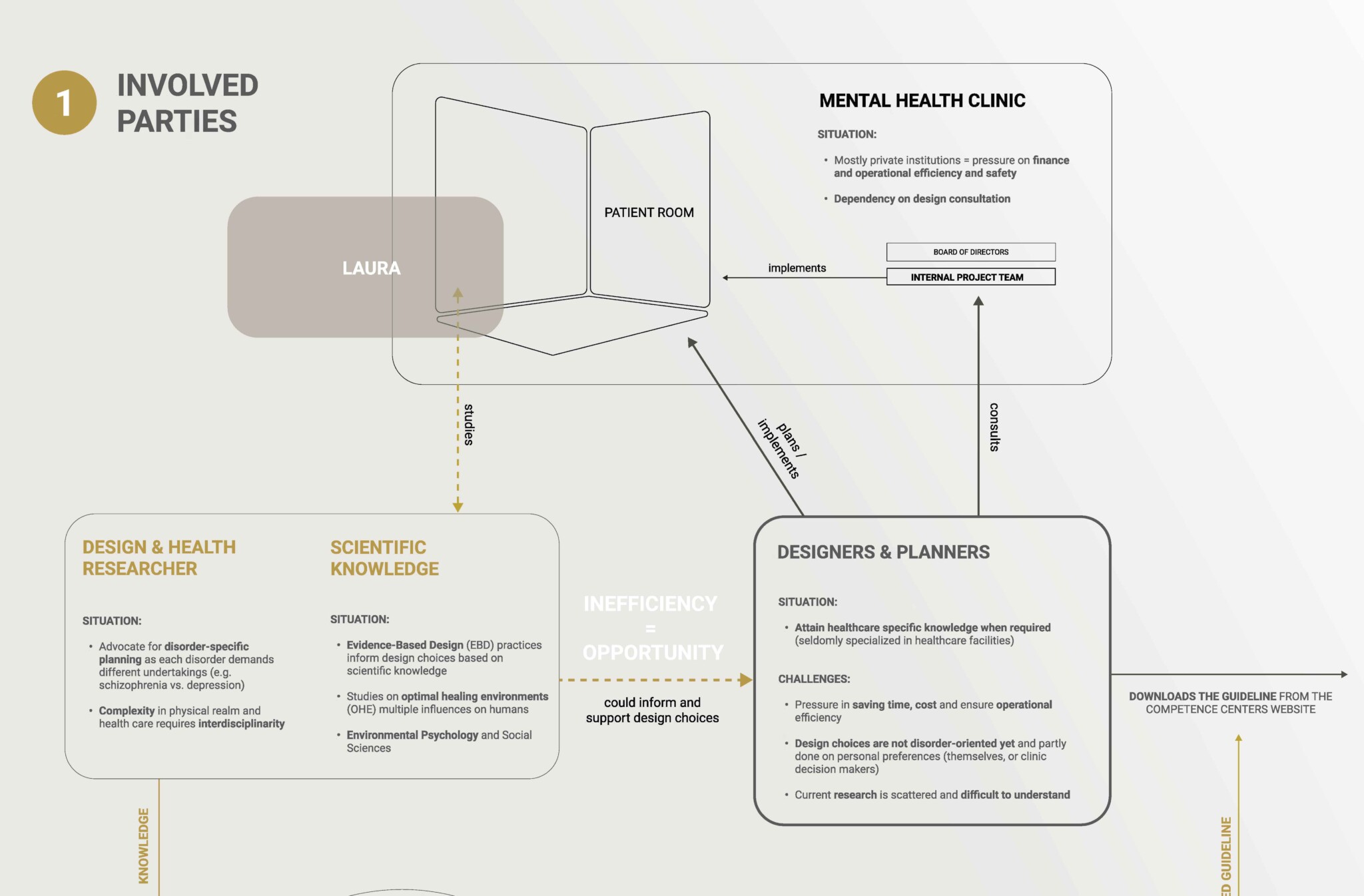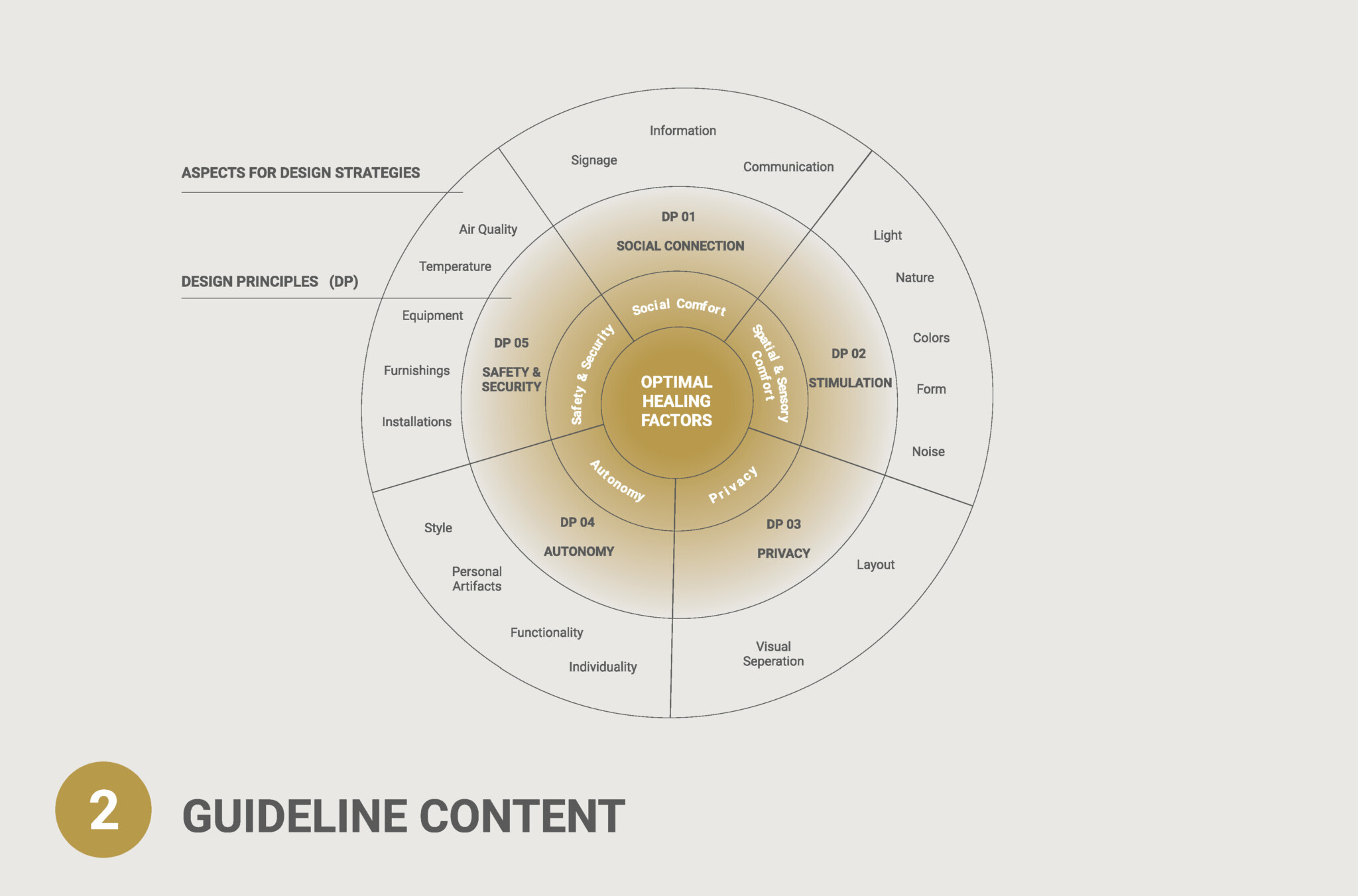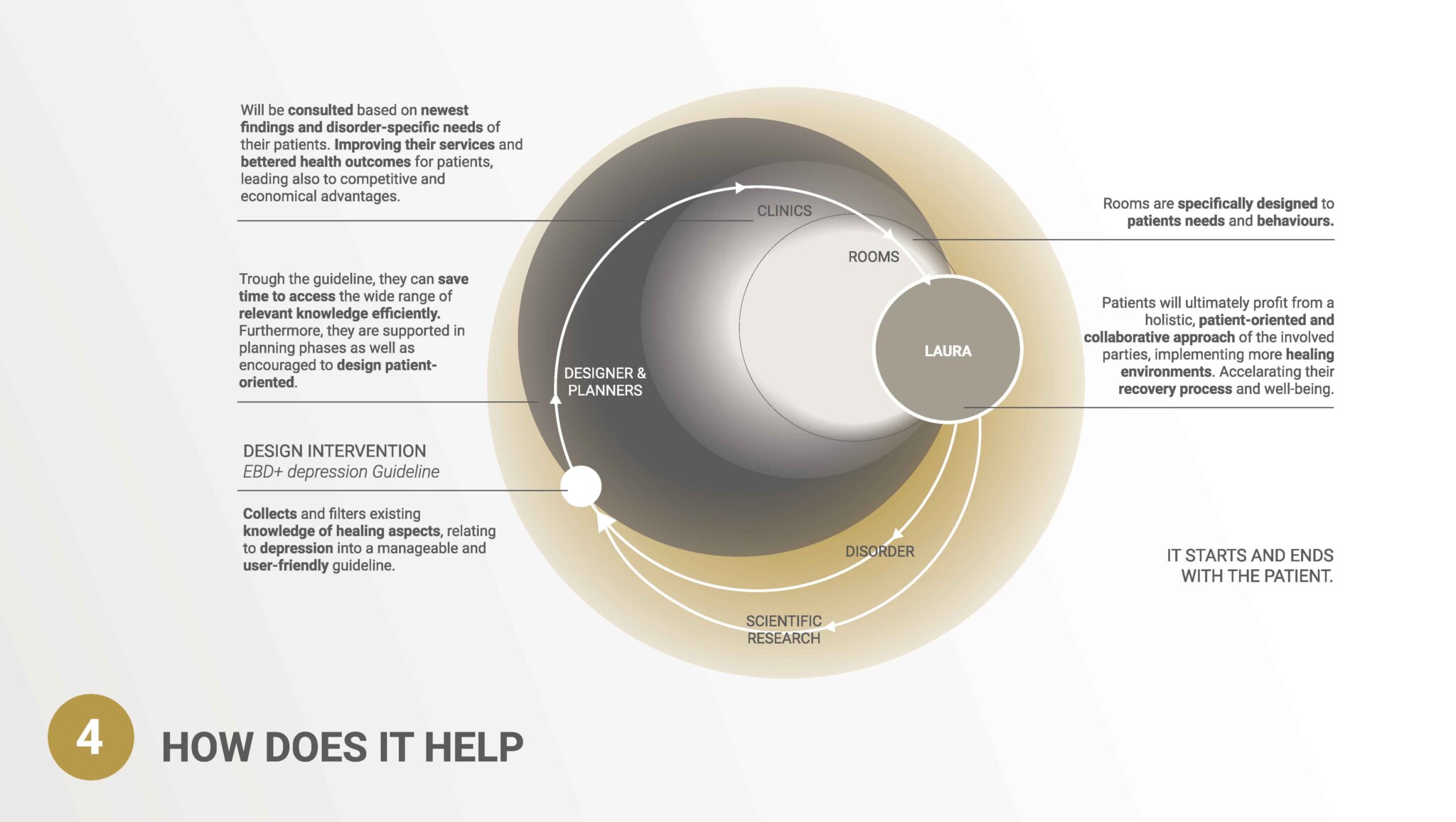Tamara Volken
Designing Healing Environments
A design management approach to improve the patient rooms in mental health clinics for individuals suffering from depression
Sensing the Problem Area
The decision is hard, but Laura can’t see any other way out than to be hospitalized in a clinic, hoping to find some urgently needed relief from her ongoing battle with clinical depression. Unfortunately, Laura is confronted with a sterile, purely functional, and standardized room. She feels «like a number out of many» and is confirmed in her doubts about her value and worth of existence.
These circumstances need to change. The research in this thesis showed that a critical aspect of ensuring a healing environment is considering the patient’s specific disorder profile and to design accordingly. Then, for instance, individuals suffering from depression have different needs than those with schizophrenia. By consciously planning the environment for particular patient groups, the environment can initiate specific emotional responses and behaviour patterns that support the patients› healing and recovery process.
Research into the physical realm’s potential for improved patient well-being and health has been studied and confirmed for many years. However, the implementation of such knowledge is rare.
Due to the complexity and vastness of the research, planners and designers rarely find the time to access and examine the existing knowledge. They are furthermore restrained in their design choices by costs and efficiency requirements. Eventually, neglecting a patient-oriented mindset in their projects.
Strategy
The «EBD+ depression» guideline aims to support and assist planners in those challenges by collecting and filtering existing research relevant to depression into a manageable and concise handbook. The guideline is an interactive PDF and entails overarching design principles with complementary strategies for implementation, offering direct access to original research papers for evidence-based argumentation. The overall strategy is to empower the stakeholders that can bring long-lasting change. In this case, e.g., architects, planners, or internal project managers from clinics; and to encourage a patient-oriented mindset amongst them.
Emergence
The guideline is the first step toward more disorder-specific and, therefore, more healing environments in mental health clinics. However, the complexity of creating such guidelines is indisputable. It can only be achieved through the collaboration of various disciplines – Underlining the importance of working together to shape a better and more healing future.
Awarded the the Swiss Design Association (SDA) Bachelor Award






0 Kommentare
Kommentieren
Danke für Ihren Kommentar, wir prüfen dies gerne.